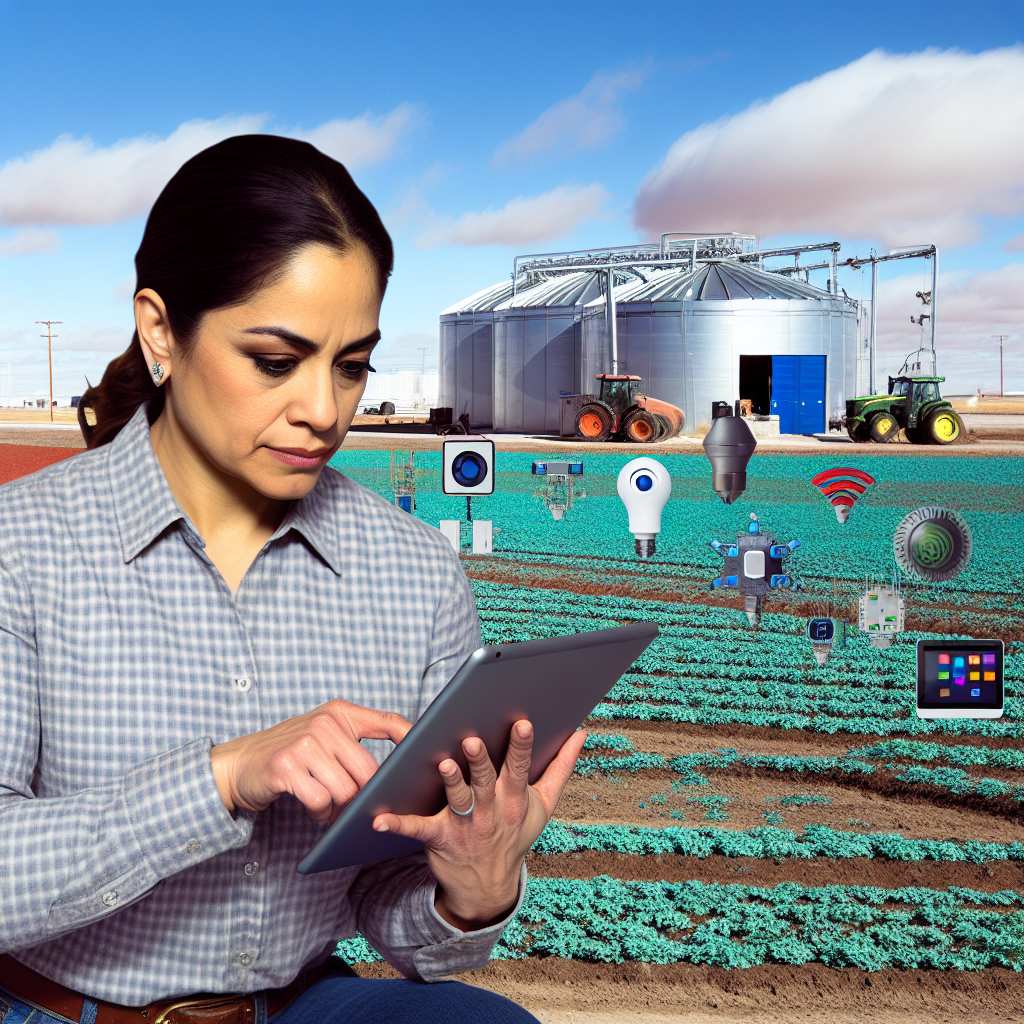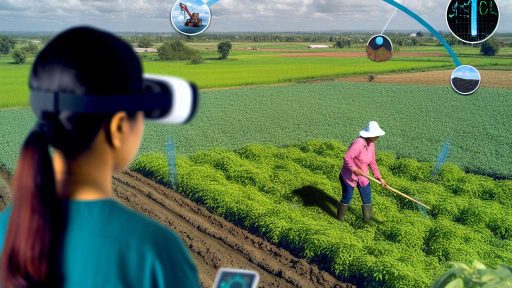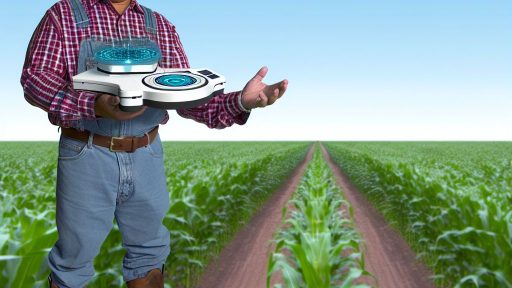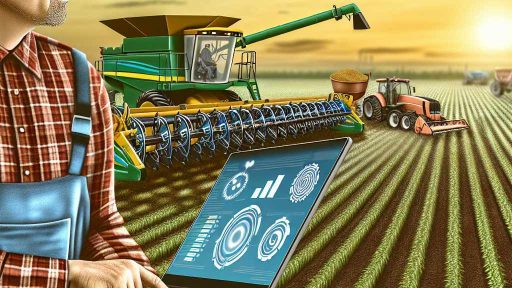Introduction to IoT in Agriculture
The Internet of Things (IoT) is transforming agriculture.
This technology connects devices and systems in real-time.
As a result, farmers can monitor and manage their resources efficiently.
IoT applications improve productivity and reduce waste.
Definition of IoT in Agriculture
IoT refers to interconnected devices that communicate over the internet.
In agriculture, these devices include sensors, drones, and equipment.
They gather data such as soil moisture, temperature, and crop health.
The flow of information allows for precise farming practices.
Importance of IoT in Agriculture
Adopting IoT in agriculture leads to smarter farming decisions.
Farmers can use data analytics for better crop management.
This technology enhances resource conservation and sustainability.
Moreover, IoT systems offer valuable insights for climate adaptation.
Consequently, they help farmers respond to changes more effectively.
Benefits of Implementing IoT
- Increased efficiency in farming operations.
- Reduced input costs through better resource management.
- Enhanced crop yield through real-time monitoring.
- Improved supply chain management and traceability.
- Access to predictive analytics for future planning.
Understanding IoT Architecture in Agricultural Systems
Key Components of IoT in Agriculture
IoT devices play a crucial role in modern agriculture.
Sensors collect data on soil moisture and crop health.
Transform Your Agribusiness
Unlock your farm's potential with expert advice tailored to your needs. Get actionable steps that drive real results.
Get StartedCameras monitor livestock and crop conditions in real-time.
These devices communicate through various protocols.
Wireless technologies enable remote monitoring and control.
Cloud platforms store and analyze large amounts of data.
Farmers gain insights through data analytics tools.
Functionality of IoT Systems in Agriculture
IoT systems enhance decision-making processes for farmers.
Automated irrigation systems optimize water usage.
Smart tractors improve efficiency and reduce labor costs.
Data from IoT devices aids in precision farming practices.
Farmers can receive alerts for pests and diseases promptly.
This proactive approach minimizes crop loss and improves yields.
Integration with Existing Agricultural Practices
Integrating IoT with traditional farming methods is essential.
Farmers can blend technology with their experience.
Training on new technologies enhances user adoption.
Collaboration among farmers fosters a knowledge-sharing environment.
Community workshops can facilitate discussion about IoT benefits.
Ultimately, effective integration leads to sustainable agriculture.
Challenges in Implementing IoT in Agriculture
Despite its benefits, IoT adoption faces several challenges.
Data security and privacy are major concerns for farmers.
Reliable internet connectivity is crucial for effective functioning.
The initial setup cost may deter some farmers from adoption.
Maintenance and troubleshooting of devices require technical knowledge.
Investing in training programs can mitigate these challenges.
Identifying Vulnerabilities: Common Threats to IoT Devices in Agriculture
Understanding Common Threats
IoT devices in agriculture face various security threats.
Showcase Your Farming Business
Publish your professional farming services profile on our blog for a one-time fee of $200 and reach a dedicated audience of farmers and agribusiness owners.
Publish Your ProfileThese threats often exploit vulnerabilities in the systems.
Common threats include unauthorized access and data breaches.
Additionally, malware attacks can disrupt operations.
Understanding these threats helps prepare effective defenses.
Unauthorized Access
Unauthorized access can result from weak passwords.
Many devices use default credentials, making them easy targets.
Moreover, inadequate authentication methods increase risks.
Regular password updates can mitigate this vulnerability.
Farmers should implement multi-factor authentication.
Data Breaches
Data breaches pose a significant risk to agricultural businesses.
They can lead to loss of sensitive information.
Cybercriminals often target agricultural databases unlawfully.
Employing encryption can protect data in transit and at rest.
Moreover, regular security audits can identify potential weaknesses.
Malware Attacks
Malware attacks can incapacitate IoT devices.
These attacks may result in unauthorized data extraction.
Farm equipment, such as drones, can be hijacked easily.
Keeping software updated helps prevent malware infections.
Conducting regular backups ensures data recovery if necessary.
Physical Vulnerabilities
Physical threats also endanger IoT devices in agriculture.
Devices left unprotected can easily be tampered with or stolen.
Implementing secure housing for equipment can reduce risks.
Additionally, using surveillance cameras can deter theft.
Farmers should educate staff about securing equipment on-site.
Network Attacks
Network attacks can disrupt communication between IoT devices.
These attacks often target the connectivity and data flow.
Farmers should utilize secure communication protocols.
Firewalls can help protect against unwanted intrusions.
Moreover, segmenting networks enhances overall security.
Find Out More: Renewable Energy Solutions Transforming Modern Agricultural Operations
Data Privacy Concerns: Protecting Sensitive Agricultural Data from Cyberattacks
Understanding the Importance of Data Privacy
Data privacy plays a critical role in agriculture.
It safeguards farmers’ sensitive information.
Protecting this data enhances trust in digital agricultural systems.
Moreover, it prevents unauthorized access to vital farming data.
Threats to Agricultural Data Security
Cyberattacks can take many forms.
Malware can compromise operational data.
Phishing attempts can deceive unsuspecting farmers.
Ransomware attacks may lock access to vital data.
Each of these threats poses significant risks to agricultural productivity.
Best Practices for Enhancing Data Privacy
Implement strong encryption for sensitive data.
Showcase Your Farming Business
Publish your professional farming services profile on our blog for a one-time fee of $200 and reach a dedicated audience of farmers and agribusiness owners.
Publish Your ProfileRegularly update software to patch vulnerabilities.
Conduct frequent security audits to assess risks.
Train staff on recognizing potential phishing scams.
Utilize multi-factor authentication to bolster security.
Collaborating with Technology Providers
Partnering with reliable technology vendors is crucial.
Choose providers who prioritize data security measures.
Ensure they comply with industry security standards.
Check their history of protecting client data effectively.
Regulatory Compliance and Data Protection
Adhering to data protection regulations is essential.
Familiarize yourself with local and international laws.
Ensure compliance with standards like GDPR if applicable.
Regularly review and update data protection policies.
Building a Culture of Security
Foster a culture of security within your organization.
Encourage open communication about data privacy concerns.
Make security training a routine for all employees.
Recognize the importance of collective responsibility in data privacy.
Explore Further: Exploring Controlled Environment Agriculture Technologies for Farmers
Best Practices for IoT Security
Implement Strong Access Controls
Strong access controls limit who can access IoT devices.
Use unique usernames and passwords for each device.
Additionally, implement two-factor authentication for critical systems.
Regularly Update Firmware and Software
Regular updates protect against known vulnerabilities.
Set up automatic updates where possible to ensure timely patches.
Always stay informed about the latest security updates from manufacturers.
Network Segmentation
Segment your network to isolate IoT devices from critical systems.
This reduces the risk of a breach spreading throughout the network.
Employ firewalls to create separate zones for different types of devices.
Data Encryption
Encrypt data both in transit and at rest to protect sensitive information.
Use protocols like TLS or SSL for secure communications.
Implement encryption standards specified by industry and government guidelines.
Monitor Network Traffic
Continuous monitoring can identify suspicious activity early.
Use intrusion detection systems (IDS) to alert on potential breaches.
Analyze logs regularly to detect anomalies or unauthorized access attempts.
Educate Staff and End Users
Training staff on IoT security best practices builds awareness.
Provide guidelines on identifying phishing attacks and social engineering tactics.
Encourage a culture of security mindfulness among all users.
Conduct Risk Assessments
Perform regular risk assessments to identify vulnerabilities.
Evaluate the potential risks associated with each IoT device.
Update your security strategy based on assessed risks.
Collaborate with Security Experts
Engage third-party security experts for a thorough evaluation.
Consider hiring a consultant familiar with agricultural IoT security.
Showcase Your Farming Business
Publish your professional farming services profile on our blog for a one-time fee of $200 and reach a dedicated audience of farmers and agribusiness owners.
Publish Your ProfileCollaborating can provide insights into advanced security measures.
Gain More Insights: AI-Based Soil Health Analysis Tools

Regulatory Compliance: Navigating Agricultural IoT Regulations and Standards
Importance of Regulatory Compliance
Regulatory compliance is crucial for agricultural IoT systems.
It protects user data and ensures system integrity.
Moreover, compliance builds trust among stakeholders.
Key Regulations Affecting Agricultural IoT
Multiple regulations govern agricultural IoT technologies.
For instance, data privacy laws safeguard sensitive information.
Additionally, cybersecurity regulations mitigate potential risks.
Understanding Industry Standards
Industry standards provide a framework for best practices.
They help in maintaining interoperability among devices.
Thus, adhering to these standards is vital for success.
Challenges in Compliance
Navigating these regulations can be challenging.
Organizations face difficulties in understanding the requirements.
Furthermore, they must manage the evolving landscape of regulations.
Staying Informed
Continuous education is necessary for compliance professionals.
Regularly attending industry conferences can provide insights.
Additionally, subscribing to regulatory updates can be beneficial.
Implementing Compliance Strategies
Companies should develop robust compliance strategies.
Conducting regular audits helps identify potential gaps.
Moreover, training employees on compliance matters is essential.
Benefits of Compliance
Complying with regulatory standards offers many advantages.
It enhances operational efficiency and minimizes risks.
Additionally, compliance can lead to competitive advantages.
Gain More Insights: Smart Farming Solutions Through Controlled Environment Agriculture
Real-World Case Studies: Lessons Learned from IoT Security Breaches in Agriculture
Case Study: Data Breach at GreenHarvest Farms
In 2021, GreenHarvest Farms suffered a significant data breach.
This breach exposed sensitive information about their farming operations.
The attackers exploited vulnerabilities in their IoT sensors.
They accessed real-time data on water usage and crop yields.
Consequently, the breach disrupted their operations for weeks.
As a lesson, GreenHarvest implemented stronger access controls.
They updated their IoT security protocols to include encryption.
Case Study: Ransomware Attack on FarmTech Solutions
FarmTech Solutions experienced a ransomware attack in early 2022.
The attackers encrypted vital data and demanded a large ransom.
This incident highlighted the vulnerabilities within agricultural software systems.
In response, FarmTech invested in regular software updates.
They trained employees on cybersecurity awareness as well.
Furthermore, they backed up data regularly to prevent data loss.
Case Study: IoT Device Manipulation at SmartAg Inc.
In 2023, SmartAg Inc. reported unauthorized manipulations of their IoT devices.
Hackers altered settings on fertilizer application units.
This resulted in environmental damage and crop losses.
Showcase Your Farming Business
Publish your professional farming services profile on our blog for a one-time fee of $200 and reach a dedicated audience of farmers and agribusiness owners.
Publish Your ProfileSmartAg responded by installing advanced intrusion detection systems.
They also established stricter user authentication measures.
This incident emphasizes the importance of device integrity checks.
Recommendations Based on Case Studies
These case studies provide essential lessons for the agricultural sector.
First, regular updates of software and hardware are crucial.
Second, robust encryption methods should be employed.
Additionally, continuous employee training on cybersecurity is vital.
Investing in intrusion detection systems enhances overall security.
Finally, establishing a response plan for breaches is necessary for resilience.
Future Trends: Emerging Technologies and Their Impact on IoT Security in Agriculture
Evolution of IoT in Agriculture
The Internet of Things (IoT) continues to revolutionize agricultural practices.
Farmers use IoT devices to monitor crops and livestock in real time.
These technologies enhance productivity and optimize resource use.
As IoT adoption grows, so do the potential security vulnerabilities.
Emerging Technologies
Several innovative technologies are shaping the future of IoT in agriculture.
Artificial Intelligence (AI) helps analyze vast data from IoT devices.
Machine Learning (ML) continually improves security algorithms.
Blockchain technology offers secure transaction records for agricultural data.
Remote sensing technology provides crucial information on crop conditions.
Challenges in IoT Security
As technology evolves, so do the tactics of malicious actors.
Cybersecurity threats to IoT systems can compromise farm operations.
Data breaches can lead to significant financial losses for farmers.
Moreover, insecure devices can disrupt the entire agricultural ecosystem.
Best Practices for Enhanced Security
Farmers must implement robust cybersecurity measures.
- Regularly update firmware on all IoT devices.
- Use strong, unique passwords for device access.
- Implement network segmentation to isolate sensitive data.
- Employ encryption to secure data transmission.
These practices significantly reduce the risk of cyber threats.
The Role of Regulations and Standards
Regulatory frameworks are crucial for enhancing IoT security.
Governments should develop guidelines for IoT device manufacturers.
Industry standards will promote better security protocols.
Compliance with these frameworks can protect farmers from breaches.
Looking Ahead
The integration of emerging technologies will continue to evolve.
Farmers need to stay informed about the latest security trends.
Investing in technology while prioritizing security is essential.
Future agricultural success will depend on secure IoT practices.
Additional Resources
Protecting farmers’ data privacy and confidentiality … – Frontiers




